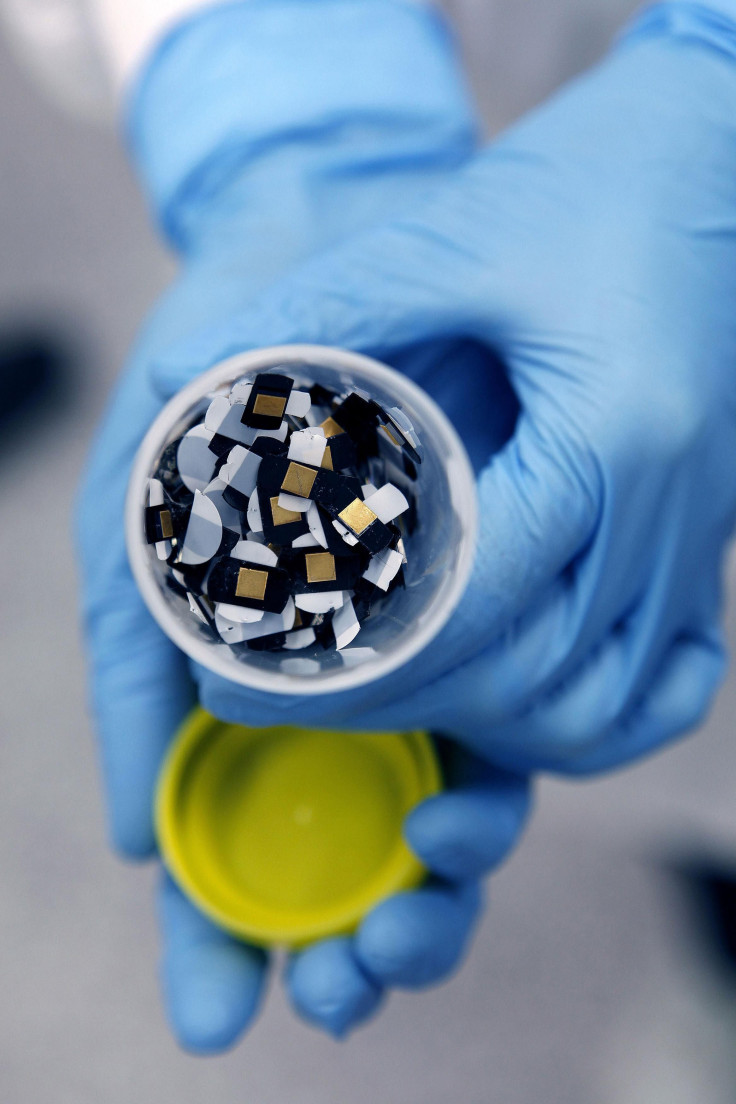Bioengineer Developing Needle-Free "Nanopatch" Vaccines

When it comes to protecting millions of people from deadly infectious diseases, Mark Kendall thinks a fingertip-sized patch covered in thousands of vaccine-coated microscopic spikes is the future.
A biomedical engineer with a fascination for problem solving has developed the so-called "nanopatch" to try to transform delivery of life-saving vaccines against potential killers like flu and the HPV virus that causes cervical cancer.
After 160 years of using needles and syringes for immunization, he says, at-risk people - especially those living in poorer, tropical, remote countries - need something simpler, stabler and easier to use. And he thinks he has the answer.
"Most current vaccines are delivered via the needle and syringe system that was developed in 1853," the scientist said in an interview from his laboratory in Australia. "It's effective on many levels but it also has many downsides."
Kendall's nanopatch has yet to prove itself in human clinical trials, but has had impressive results in animal tests.
Those have been enough to persuade U.S. pharmaceutical giant Merck, maker of many of the world's top-selling vaccines, to give Kendall a three-year research grant to take the device into human trials.
NO COLD CHAIN
The nanopatch is designed to place a tiny amount of vaccine just under the skin without the need for a needle jab. Because it delivers the active ingredient right to where it is needed, tests have shown it can generate same immune response with only a fraction of the dose needed in a conventional vaccine.
And because it uses the vaccine in dried form, it does not need cold-chain refrigeration or trained staff to deliver it.
Kendall says one key limitation of needle and syringe vaccines, beside needing expensive cold-chains and specialist staff to deliver them, is that the needle puts the vaccine into muscle, which has relatively few immune cells.
In the last 30 years or so, immunologists have discovered that skin, unlike muscle, is rammed full of immune cells, making it a far more effective place to apply vaccines. "You could argue the skin is our immune sweet spot," Kendall said.
So far, Kendall's research team at the University of Queensland's Institute for Biotechnology and Nanotechnology have tested the nanopatch on mice using various inoculations - including against flu, the human papillomavirus (HPV) that causes cervical cancer, and even with a potential new vaccine against mosquito-borne viral disease chikungunya.
"We demonstrated that you need only a tiny fraction of the dose, perhaps a hundredfold less" to get the same immune response, Kendall said.
Among other potential advantages of the nanopatch are that it is pain free, low cost - it could be made for under $1 a dose compared with more than $50 for many current vaccines - and easily transportable. Kendall even ponders whether it might be mailed to remote places for people to administer it themselves.
PATCHY HISTORY
But he also recognizes there is a long way to go to bring what is still an experimental device to market - and he is aware of previous attempts at vaccine patches that had little success.
The Austrian biotech firm Intercell, now owned by France's Vivalis, saw its share price slump in 2010 after its experimental vaccine enhancement patch (VEP) system against pandemic flu failed in a mid-stage trial.
Kendall says, however, that Intercell's VEP system had a very different mode of action. The patch was applied after a needle vaccination and designed to boost the jab's effect by putting an adjuvant, or booster, into the skin.
His nanopatch applies the vaccine direct, with no adjuvant. "We apply the patch against the skin with an applicator ... and we have a high level of control of the antigen delivered."
Kendall is keen to ensure that if his patch does make it to market, it will not follow the pattern of many previous vaccine developments, which have seen life-saving shots go first to people in the wealthy world and only after several years start to reach those who need them in poorer countries.
There are still 17 million deaths a year from infectious diseases, mostly in poor countries that often cannot afford the pricey vaccines that could prevent them.
Kendall has just returned from a feasibility study using prototypes of the nanopatch in Papua New Guinea, which has one of the world's highest rates of infection with HPV - a virus that can lead to cervical cancer, the biggest cause of death in young women in developing countries.
He travelled in daytime temperatures of 30 to 40 degrees Celsius and up to 100 percent humidity "and when we got back and tested the patches we found there had been no loss in activity".
This success means Kendall now wants to push on to full clinical trials on humans, starting this year in Australia and followed swiftly with parallel trials in Papua New Guinea. An enterprise award of $100,000 from the luxury watchmaker Rolex is helping him along that path.
"This could potentially change the world of vaccinations. But we still have a very long way to go," he says.



























